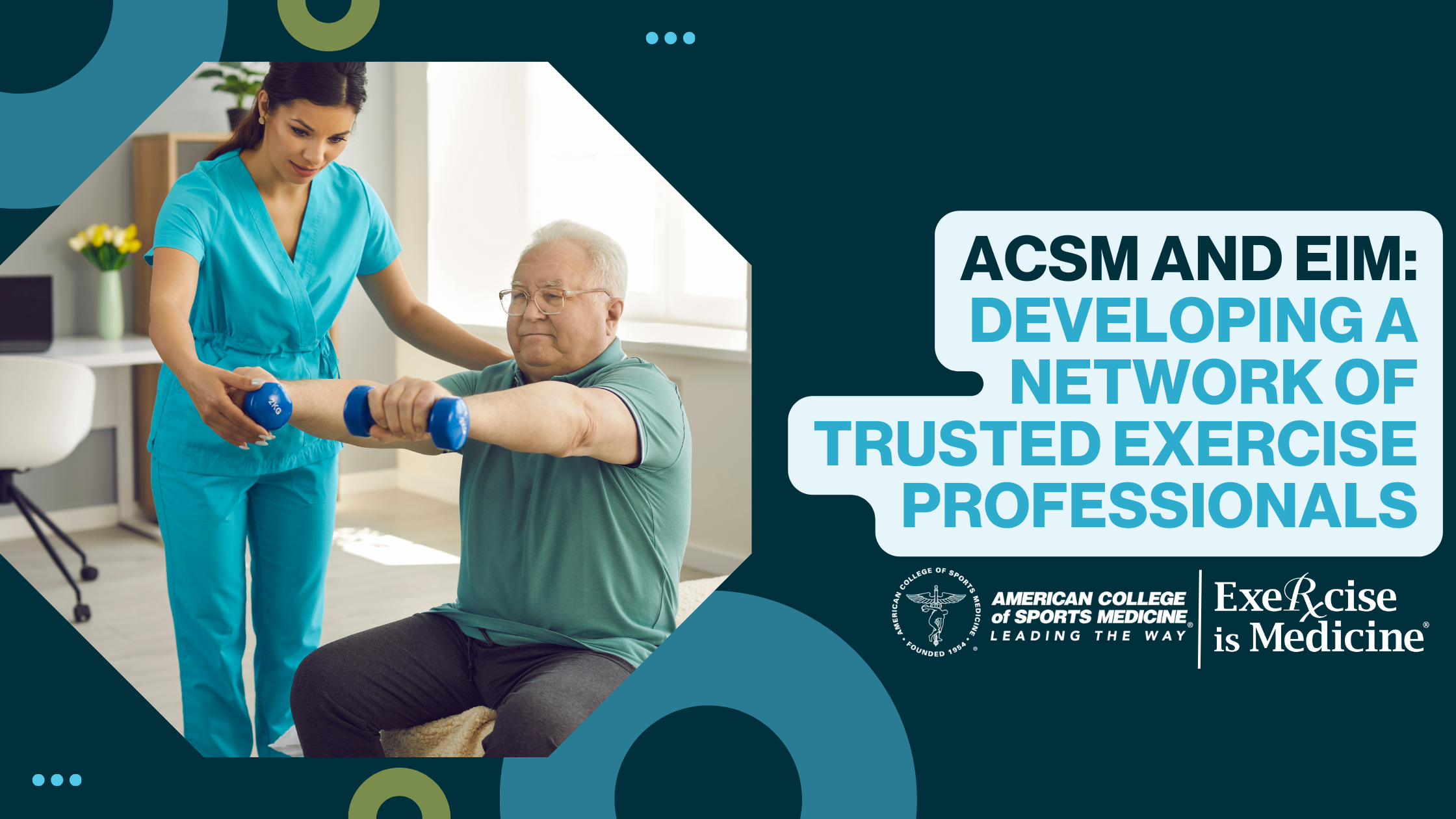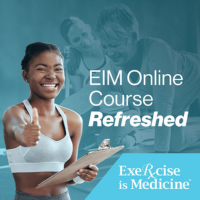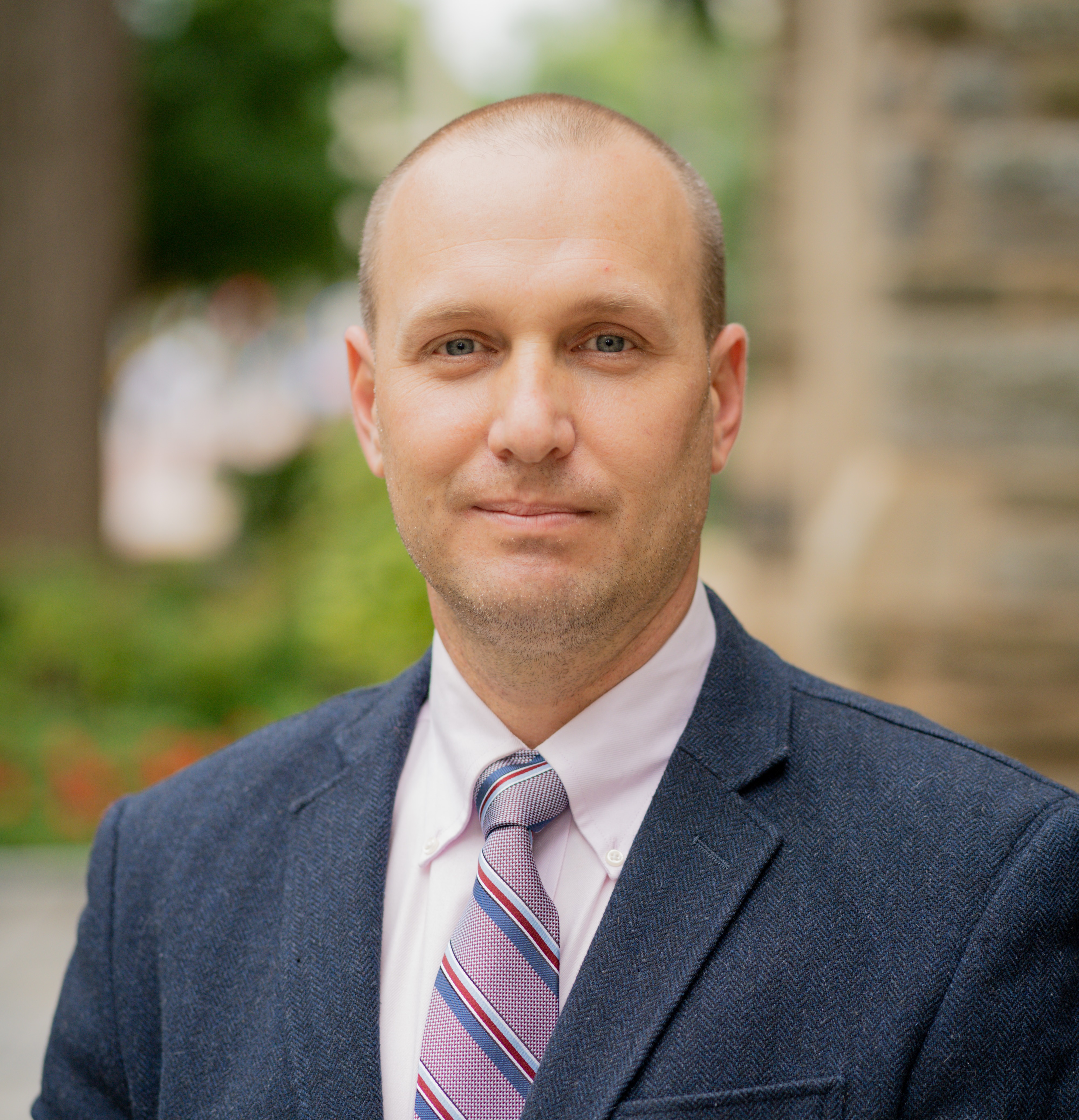by
Greg Margason
| Mar 20, 2024
 Individuals seeking expert guidance in becoming physically active face a marketplace full of exercise professionals with certifications from several reputable, and sometimes not-so-reputable, organizations. With so many exercise certifications available in the U.S. market, there is often widespread confusion as to who are trusted sources of expert guidance.
Individuals seeking expert guidance in becoming physically active face a marketplace full of exercise professionals with certifications from several reputable, and sometimes not-so-reputable, organizations. With so many exercise certifications available in the U.S. market, there is often widespread confusion as to who are trusted sources of expert guidance.
The American College of Sports Medicine(ACSM) has long been the gold standard in certifying exercise professionals through multiple certification and continuing education programs. More recently, ACSM has been playing a major role in establishing national standards for exercise professionals under the United States Registry of Exercise Professionals® (USREPS), an effort to secure recognition of registered exercise professionals for their distinct roles in medical, health, fitness and sports performance fields.
The EIM Credential
ACSM originally launched the Exercise is Medicine® (EIM) Certification in 2012 to identify exercise professionals who were the most qualified to work with patients in health care settings. In 2021, the structure and requirements for the EIM Certification program were strategically reimaged as a specialty program (the EIM Credential), often referred to as an educational certificate. Educational certificates are advanced training programs used to expand a certified professional’s ability to practice in certain fields: (1) in emerging fields with limited information about and/or ongoing research into the efficacy of a particular service/program, (2) fields that require additional training knowledge or skills to safely and effectively work with clients/patients who have unique considerations, or (3) both.
The EIM Credential includes information about working with patients with common chronic medical conditions (e.g., hypertension, dyslipidemia, obesity, metabolic syndrome, nonalcoholic fatty liver disease, prediabetes and type 2 diabetes, osteoarthritis, low back pain) in their community or referred to them by health systems and health care providers. In addition, the EIM Credential requirements were updated and simplified to make it easier for health care providers to understand and refer patients to credentialed professionals. The EIM Credential distinguishes exercise pros as skilled professionals trained to work as an extended part of a health care team and guide individuals of all age groups and with multiple co-morbidities to better health through physical activity.
Learn more about how you can earn the EIM Credential.
Launch of the new EIM Credential online course
 A main requirement for earning the EIM Credential is completing a newly released interactive online course that can be completed asynchronously (at your own pace). The latest version of the EIM Credential online training course was developed by senior course editors Robyn Stuhr, M.A., FACSM, and Cedric Bryant, Ph.D., FACSM, through a yearlong process leading to its official launch in June 2022. The course involved input from more than 35 ACSM subject matter experts, who provided their expertise in developing content and providing the most current information on physical activity in alignment with U.S. Physical Activity Guidelines and ACSM’s Guidelines for Exercise Testing and Prescription.
A main requirement for earning the EIM Credential is completing a newly released interactive online course that can be completed asynchronously (at your own pace). The latest version of the EIM Credential online training course was developed by senior course editors Robyn Stuhr, M.A., FACSM, and Cedric Bryant, Ph.D., FACSM, through a yearlong process leading to its official launch in June 2022. The course involved input from more than 35 ACSM subject matter experts, who provided their expertise in developing content and providing the most current information on physical activity in alignment with U.S. Physical Activity Guidelines and ACSM’s Guidelines for Exercise Testing and Prescription.
The new, interactive EIM online course consists of 17 sections grouped into five modules:
- Health Care Basics
- Exercise Prescription for Common Chronic Medical Conditions
- Exercise Prescription for Older Adults
- Facilitating Behavior Change
- Exercise Prescription in Special Settings
Learn more about the EIM Online course.
Benefits of the EIM Credential training course
The EIM Credential presents an opportunity for exercise professionals to gain additional training and offers a pathway to become an active part of the EIM movement. Whether you receive referrals from a health care provider or simply work with clients who have chronic diseases, the EIM online course will prepare you to safely guide individuals in becoming more physically active.
Since its release, the latest version of the EIM Credential online course has been completed by more than 1,000 exercise and allied health professionals. You can register for the online course in its entirety or take individual modules of interest. Those who complete the online course have the option of following a simple process to obtain the EIM Credential.

Mark Stoutenberg, Ph.D., MSPH, is a Professor in the Department of Sport and Exercise Science at Durham University in the United Kingdom. He has always worked as a consultant with Exercise is Medicine since 2013.
Special thanks to Robyn Stuhr, MA, ACSM-CEP, FACSM, Shelby Mandla, and Francis Neric, MS, MBA for their contributions to this piece.